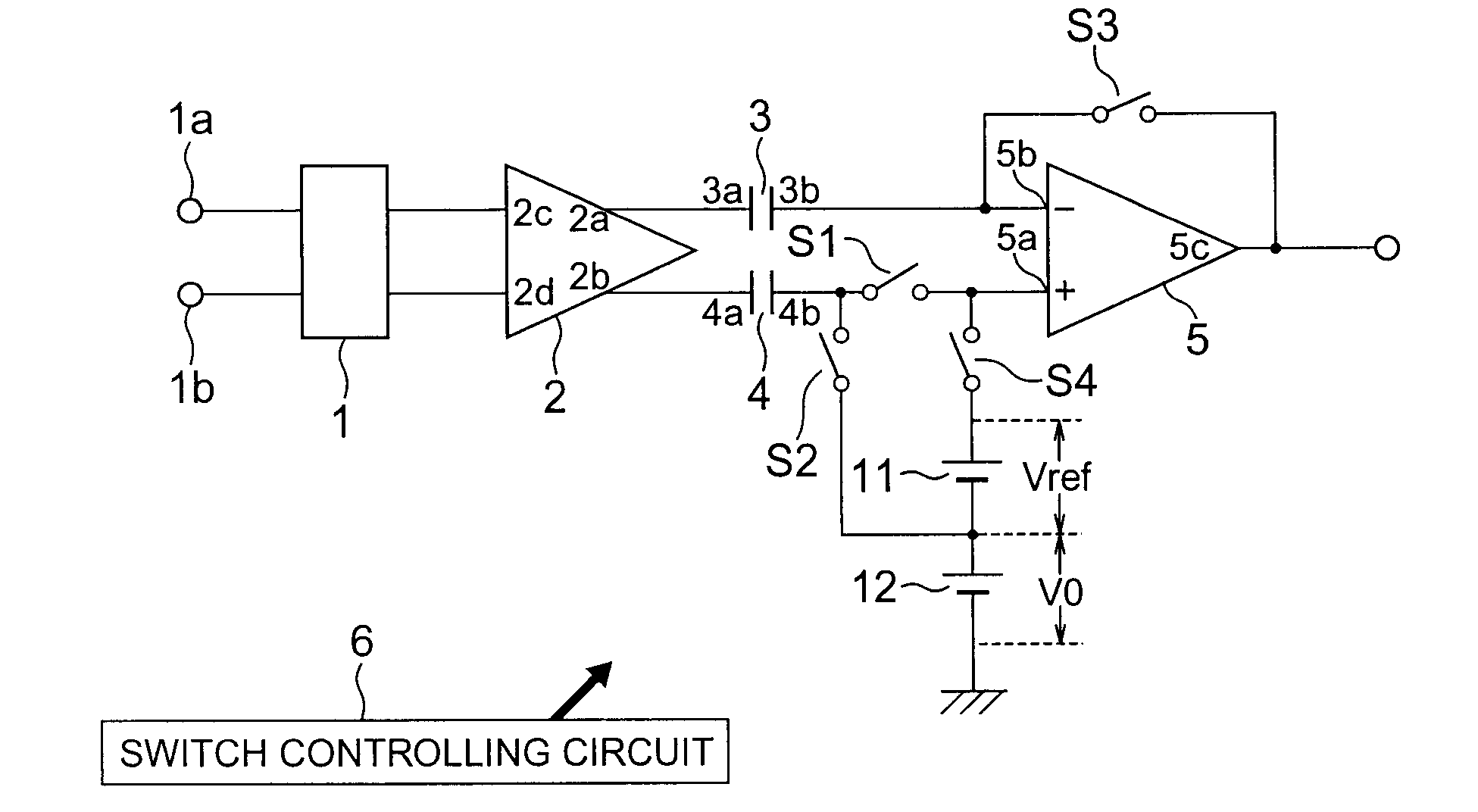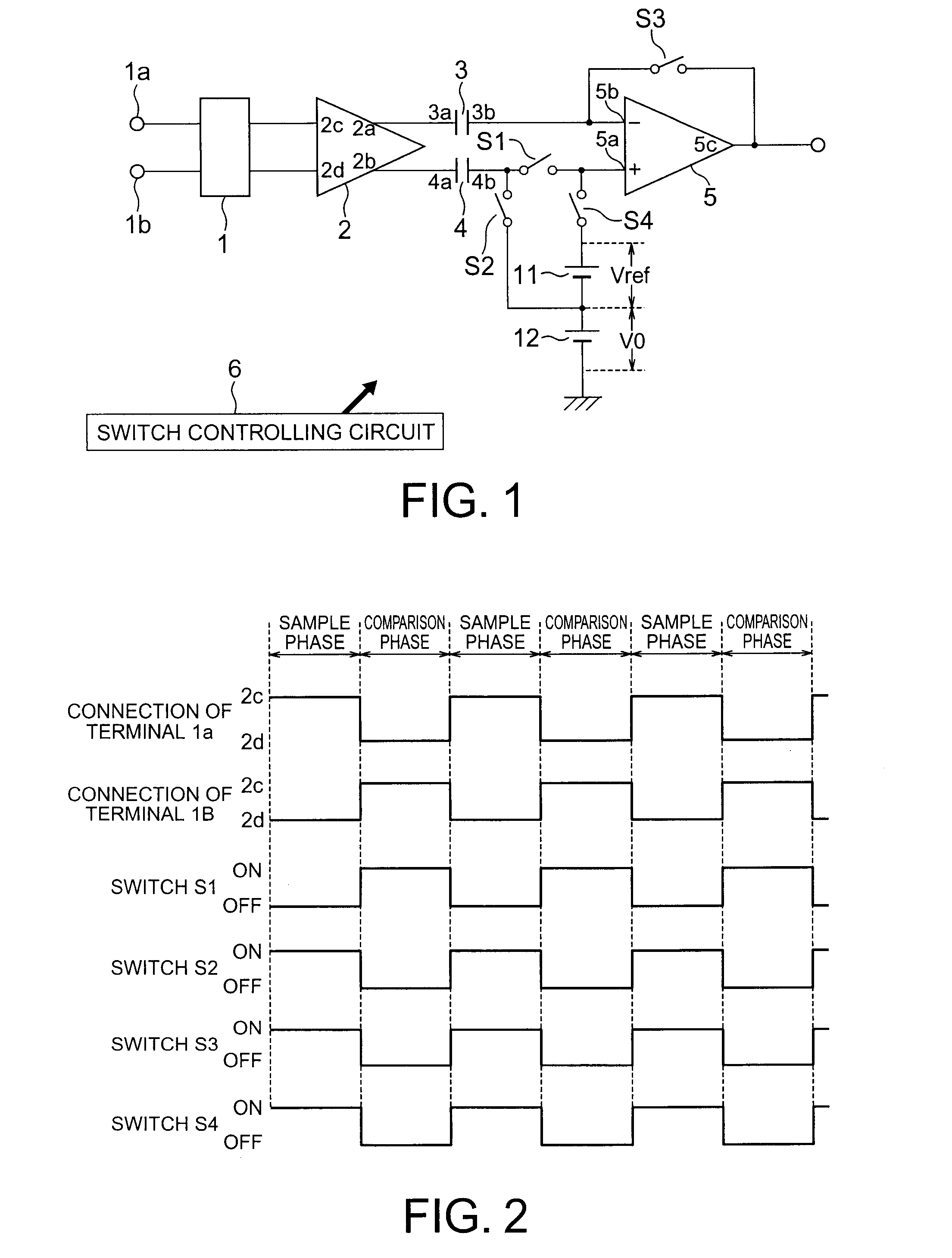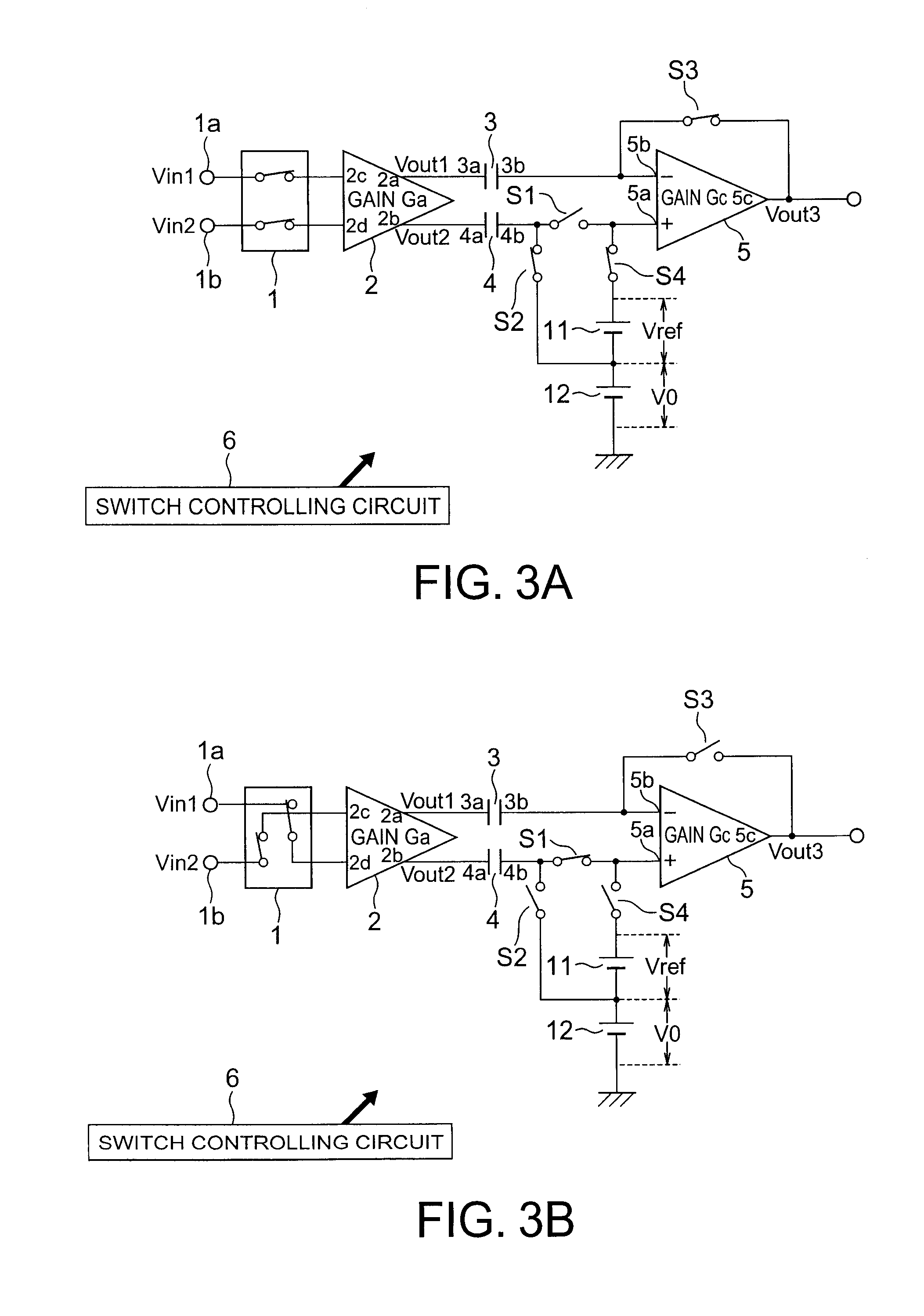Signal detecting circuit
a signal detection and circuit technology, applied in the field of signal detection circuits, can solve problems such as inconsistent comparison values
- Summary
- Abstract
- Description
- Claims
- Application Information
AI Technical Summary
Problems solved by technology
Method used
Image
Examples
first embodiment
[0037]FIG. 1 is a block diagram showing a schematic configuration of a signal detecting circuit in accordance with a first embodiment. The signal detecting circuit includes a switching circuit 1 for switching an output destination of the voltage signal inputted from the input terminals 1a and 1b; an amplifier 2 which receives an output from the switching circuit 1 at terminals 2c and 2d, and then amplifies and outputs from terminals 2a and 2b; a capacitor 3, a terminal 3a of which is connected to the terminal 2a of the amplifier 2; a capacitor 4, a terminal 4a of which is connected to the terminal 2b of the amplifier 2; switches S1 and S2, one end of which is connected to the other terminal 4b of the capacitor 4; an amplifier 5 having a non-inverting input terminal 5a which is connected to the other end of the switch S1 and an inverting input terminal 5b which is connected to the other terminal 3b of the capacitor 3; a switch S3 which is connected to between the output terminal 5c o...
second embodiment
[0085]FIG. 5 shows a schematic configuration of the signal detecting circuit in accordance with a second embodiment. The Hall element 7 has four terminals h1 to h4. A power supply voltage Vdd is applied to the terminals h1 and h3 via the switches S5 and S7 respectively. The terminals h2 and h4 are grounded via switches S6 and S8 respectively.
[0086]In addition, the terminals h1 and h3 of the Hall element 7 are connected to the terminal 2c of the amplifier 2 via the switches S9 and S11 respectively. The terminals h2 and h4 are connected to the terminal 2d of the amplifier 2 via the switches S10 and S12 respectively.
[0087]The description about the connection of the amplifier 2, the capacitors 3 and 4, the amplifier 5, the decision threshold voltage source 11, the reference voltage source 12, and switches S1 to S4 is omitted since they are the same as in the first embodiment.
[0088]A switch controlling circuit 6 performs an on / off control of the switches S1 to S12.
[0089]FIG. 6 is a timin...
PUM
 Login to View More
Login to View More Abstract
Description
Claims
Application Information
 Login to View More
Login to View More - R&D
- Intellectual Property
- Life Sciences
- Materials
- Tech Scout
- Unparalleled Data Quality
- Higher Quality Content
- 60% Fewer Hallucinations
Browse by: Latest US Patents, China's latest patents, Technical Efficacy Thesaurus, Application Domain, Technology Topic, Popular Technical Reports.
© 2025 PatSnap. All rights reserved.Legal|Privacy policy|Modern Slavery Act Transparency Statement|Sitemap|About US| Contact US: help@patsnap.com



